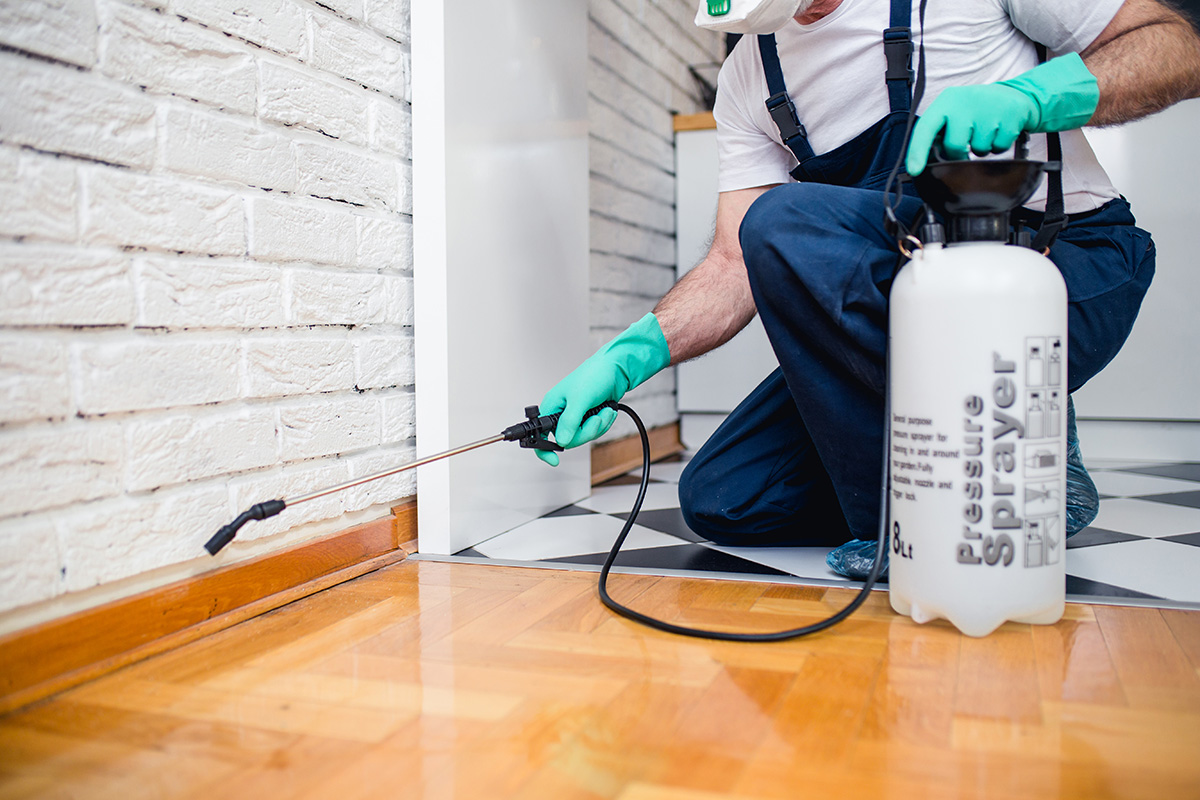Bed Pest Therapy Breakdown: Comparing Chemical Vs. Non-Chemical Solutions
In the realm of bug control, specifically when managing the persistent concern of bed pests, the option in between chemical and non-chemical therapy solutions can be a crucial one. Both techniques provide distinct benefits and downsides, affecting elements such as performance, security factors to consider, and overall price. By checking out the nuanced information of each approach, a more clear understanding of which course to seek in dealing with a bed pest infestation can be achieved.
Performance of Chemical Treatments
Chemical treatments for bed bug infestations have been commonly acknowledged for their powerful and quick effectiveness in eradicating these bugs. When considering the effectiveness of chemical treatments, it is essential to understand that they can supply a comprehensive and quick service to a bed bug issue. Specialist exterminators usually rely upon insecticides to target bed pests at different phases of their life cycle, consisting of nymphs, adults, and eggs. These chemicals generally work by interfering with the bed bugs' nerves, causing paralysis and eventual death.
In addition, chemical treatments have the benefit of offering residual results, implying that they can proceed to get rid of bed insects also after the initial application. This recurring activity is particularly beneficial in combating any kind of possible re-infestations. Furthermore, the rapid action of chemical therapies can bring alleviation to people facing severe bed pest problems, permitting them to reclaim control of their living areas rapidly.
Safety And Security Interest In Chemical Solutions
One critical aspect that needs careful factor to consider when making use of chemical remedies for bed bug therapy is making certain the security of passengers and the atmosphere. While chemical therapies can be effective in getting rid of bed bugs, they may posture risks if not managed properly. Among the main safety worry about chemical services is the potential damage they can cause to human health and wellness. Exposure to particular chemicals utilized in bed bug therapies can cause respiratory problems, skin irritation, or other negative reactions, specifically in individuals with pre-existing conditions or level of sensitivities. In addition, improper application or dose of chemical pesticides can result in poisonous residues remaining in the cured location, presenting long-term health threats to occupants.
Furthermore, the ecological impact of chemical remedies is one more significant consideration. Some chemicals made use of in bed bug treatments may be harmful to beneficial pests, wildlife, and ecological communities if they seep into the dirt or water supply. It is vital to utilize chemical therapies carefully, complying with safety standards, and taking into consideration much less poisonous choices to minimize these threats and ensure the safe and efficient monitoring of bed bug problems.
Benefits of Non-Chemical Techniques
Considering the potential security worries and ecological impact associated with chemical remedies for bed bug therapy, exploring non-chemical approaches presents an appealing choice with several unique benefits. Non-chemical treatments are ecologically friendly, as they do not contribute to air or water pollution, making them a lasting option for bug control.
Furthermore, non-chemical solutions can be efficient in targeting bed insects, consisting of hard-to-reach locations where chemical therapies may not pass through - A1 bed bug exterminator charlotte. Methods such as heat therapy, vacuuming, steam cleansing, and cushion coverings supply detailed elimination without the usage of harmful chemicals.
Limitations of Non-Chemical Treatments

In addition, non-chemical treatments typically need numerous applications to attain effective eradication. This can be time-consuming and may not constantly guarantee complete elimination of all bed insects and their eggs, particularly in hard-to-reach or hidden areas.
Furthermore, the success of non-chemical treatments heavily relies on proper implementation and thoroughness, which can be challenging for people without specialist proficiency. Insufficient application of non-chemical methods may result in incomplete elimination, causing consistent invasions and the demand for added therapies.
As a result, while non-chemical therapies have their benefits, it is important to acknowledge these limitations and consider them when identifying the most effective technique for taking care of bed bug problems.
Price Contrast: Chemical Vs. Non-Chemical Options
Given the restrictions linked with non-chemical treatments, an important element to review in the context of bed bug monitoring is the cost comparison in between chemical and non-chemical options. In contrast, non-chemical treatments like warmth treatment or steam can be more expensive, with costs varying from $1,000 to $6,000 for an entire home. While the preliminary expense of chemical therapies might appear lower, multiple treatments may be called for to totally eliminate the invasion, possibly boosting the overall cost.
Verdict

Considering the prospective security concerns and environmental effect linked with chemical remedies for bed pest treatment, discovering non-chemical approaches presents an appealing option with a number go to this web-site of distinctive benefits.Given the limitations associated with non-chemical treatments, a necessary element to evaluate in the context of bed bug administration is the expense comparison between chemical and non-chemical alternatives. In comparison, non-chemical therapies like warmth therapy or heavy steam can be a lot more expensive, with costs ranging from $1,000 you can look here to $6,000 for an entire home. While the first price of chemical therapies may appear lower, several therapies might be called for to fully eradicate the problem, possibly boosting the general expense.In conclusion, when comparing chemical and non-chemical bed bug treatment options, it is crucial to consider performance, safety and security, advantages, restrictions, and expense.